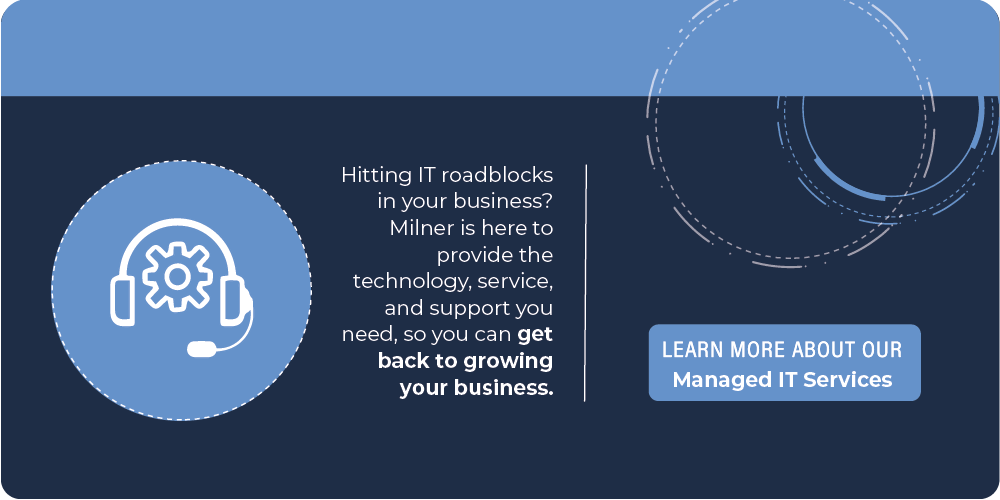These days, remote work is more common than ever. Now that the options to open offices to in-person work are available, it isn’t surprising that so many employees report that they’d rather not make the daily commute to jobs they might otherwise love.
Whether your organization currently has remote work policies in place or not, the fact is that the past year has proven that most employees can do more at home than many might have previously thought. And, beyond offering remote work options as a perk to employees, employers are also learning that they can save substantially by allowing employees to work more flexibly.
Even though most of us are now more familiar with the concept of working remotely, not every remote working setup is as great as the next one. Launching into remote team environments without the proper tools can actually set organizations back considerably, putting them at increased risk for security breaches, data loss, team fragmentation, and other inefficiencies. To really get the most out of a remote or hybrid workforce, organizations must put plans in place to leverage both common and emerging technologies for maximum efficiency, productivity, and security.
From UCaaS phone systems to security solutions, here are five business and virtual technologies that can help organizations empower a remote workforce to do their best work:
-
Virtual workspace tools like Microsoft Teams
In 2020, the Microsoft Office 365 virtual meeting and collaboration product, Microsoft Teams, added a record 95 million users. For sure, it was one of the fastest-growing web applications of the year. Offering a chat-based workspace and giving teammates instant and secure access to meetings and conversations, the tool is a game changer for organizations looking for flexible collaboration. Organizations that adopt the tool can expect better communication, easier file sharing, advanced security controls, and access to schedules and team availability—all within a convenient, real-time, and regulatory compliant central hub.
-
Modern unified communications systems
Utilizing a modern, unified communications (UCaaS) system can help teams seamlessly communicate, no matter where anyone is sitting. These business communications systems integrate voice over IP (VoIP) calling and other modes of communication, like chat, video, and text, with other applications that your teams may already use. Most importantly, they allow for mobility and virtual capability, helping to eliminate geographical considerations from how organizations are able to communicate and operate—both internally and externally. For virtual teams, this is a game changer, making it possible to operate more productively using video conferencing and other modes of communication to instantly share ideas and access shared workspaces.
-
Cloud servers, backup, and recovery
Though COVID-19 definitely accelerated the utilization of cloud-based IT infrastructures, and a slew of cloud-based software as a service (SaaS) solutions, the mass migration to the cloud was already well underway going into 2020. One thing is for sure, innovations happen quickly these days, rendering current tools “out-of-date” more quickly than ever before. By partnering with a managed IT provider to host data on fully managed virtual servers, organizations are not only about to keep data more secure and backed up in the event of a hack or disaster, but also have future-proof, scalable access to the latest technologies without having to continuously foot the costs of company-wide updates.
-
Virtual private network (VPN)
Utilizing a virtual private network allays security concerns while allowing remote employees to access internal systems. For many organizations, VPN is one of the most essential tools to make hybrid workspaces a secure reality. The virtual private network provides users with a secure, private connection between two devices, such as their home PC and servers at the office. This provides the most secure method for giving employees access to the same network assets that they would have in the office, without the increased risk of hacking or other cybersecurity threats.
-
Digital document management systems
Being able to retrieve files remotely depends on those files not being located in a drawer somewhere. Digital document management, or enterprise content management (ECM) systems, can help you manage content electronically, giving you the ability to more quickly and easily retrieve information. ECMs can aggregate documents and data from a number of sources, like online forms, emails, scanned paper documents, and multimedia content into a single repository where they can be securely accessed remotely searched and retrieved.
Investing in a secure, scalable, and sophisticated remote work infrastructure is more than a temporary adaptation; it is a savvy business strategy that enables your organization to maximize productivity regardless of the world will face today or tomorrow. While many organizations decide what kind of remote or hybrid workspaces they would like to adopt in the coming years, these easy-to-adopt and affordable technologies can make it easier to achieve new levels of productivity and business results, regardless of where the employee is located.
Looking for a technology partner to help you build a more flexible work environment for your organization? Milner provides a full range of virtual technologies that can enhance productivity in and out of the office.
Download our free checklist, 18 Things to Make Your Remote Work Secure, Convenient, and Stress‑Free.

.jpg?sfvrsn=6d8e9561_4)
